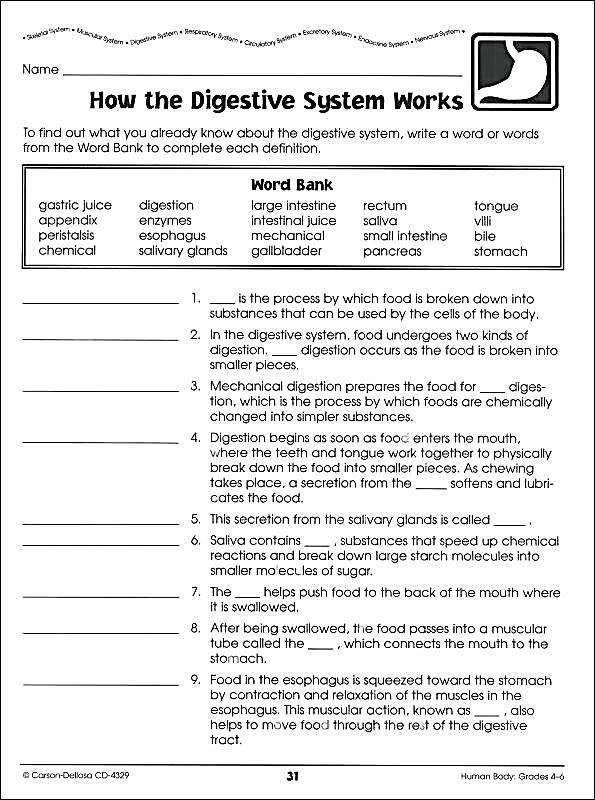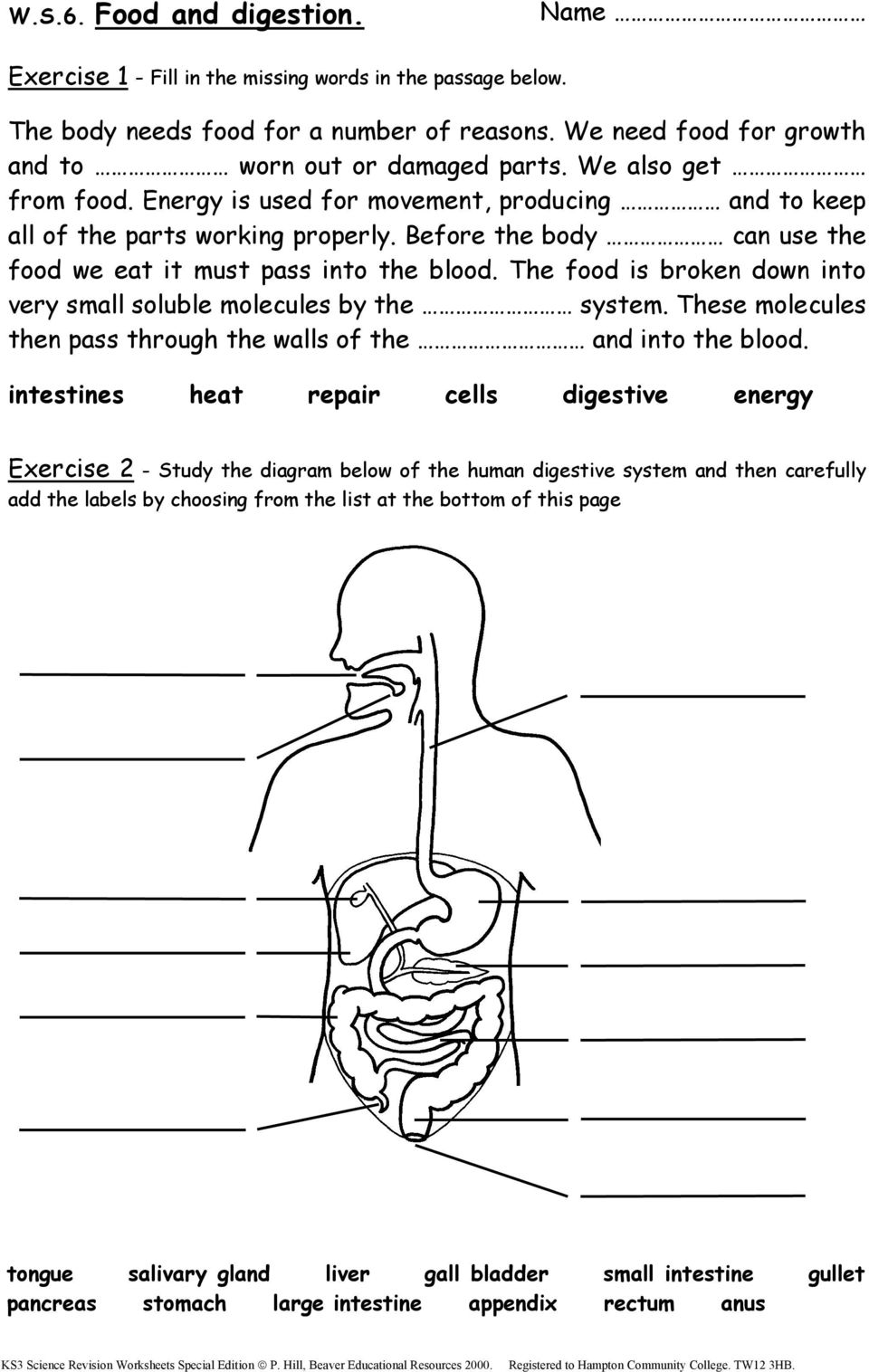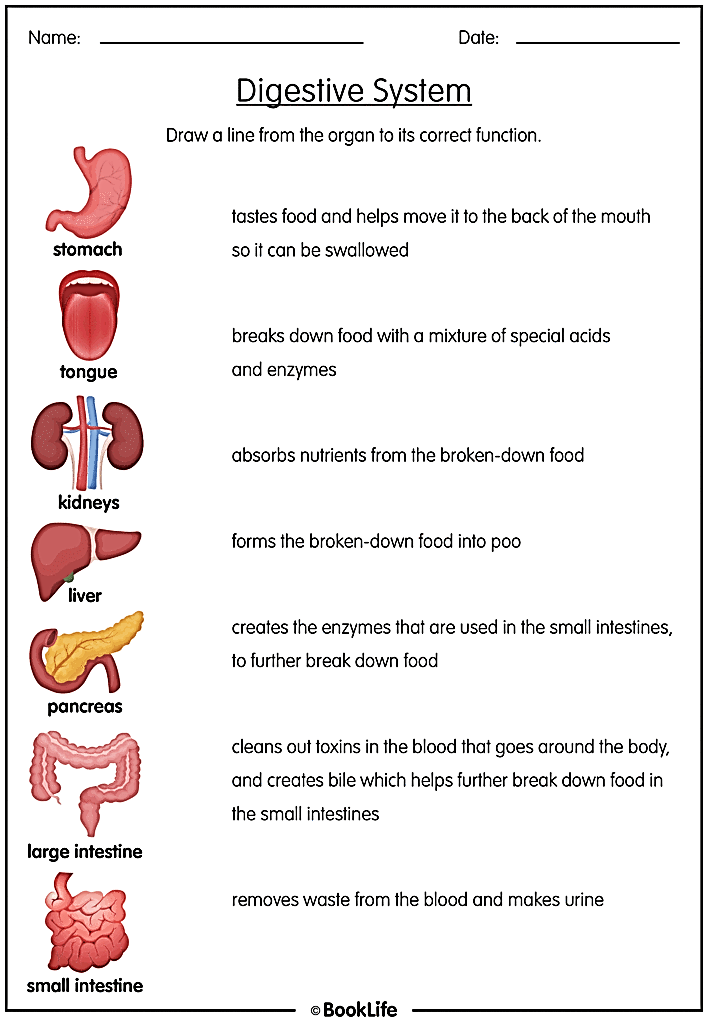Файл: Учебное пособие 2 по английскому языку Для студентов лечебного и педиатрического факультета (2 семестр) 2020 год.doc
ВУЗ: Не указан
Категория: Не указан
Дисциплина: Не указана
Добавлен: 23.11.2023
Просмотров: 530
Скачиваний: 2
СОДЕРЖАНИЕ
XVIII. Watch the video ‘Conduction system of the Heart and ECG principles’ and answer the questions
VII. Read and translate the sentences paying attention to the Paired Conjunctions:
XIII. Fill in the missing words in the passage below:
XIV. Match the organ diagram and the function:
XVII. Choose the right variant:
XVI.Watch the video ‘Human Body Nervous System’ and answer the questions:
XVI.Watch the video ‘Zoo of Microorganisms &Netherlands’ and answer the questions:
1. to observe 2. to prevent 3. to follow-up 4. to evaluate 5. to offer 6. to present with
XVIII. Watch the video ‘Stamford Hospital Inpatient Surgery Tour’ and answer the questions
XIV. Watch the video ‘Meet the Team at the Ottawa Hospital’ and answer the questions:
XVI. Watch the Video ‘Medical treatment for refugee children in Canada’ and answer the questions:
XIII. Fill in the missing words in the passage below:
XIV. Match the organ diagram and the function:
Listening
XV. Tell about the stages of digestion.
https://www.youtube.com/watch?v=-1aZj6v6dxc GI tract
XVI.Watch the video ‘How does the Stomach function?’ and answer the questions:
https://www.youtube.com/watch?v=ZuJzYYIS9c4
-
What is the role of the impulses that brain sends to the stomach? -
What part of the stomach is gastric juice produced in? -
What is the role of gastric acid? -
How often do the stomach walls contract?
XVII. Choose the right variant:
Multiple Choice Test
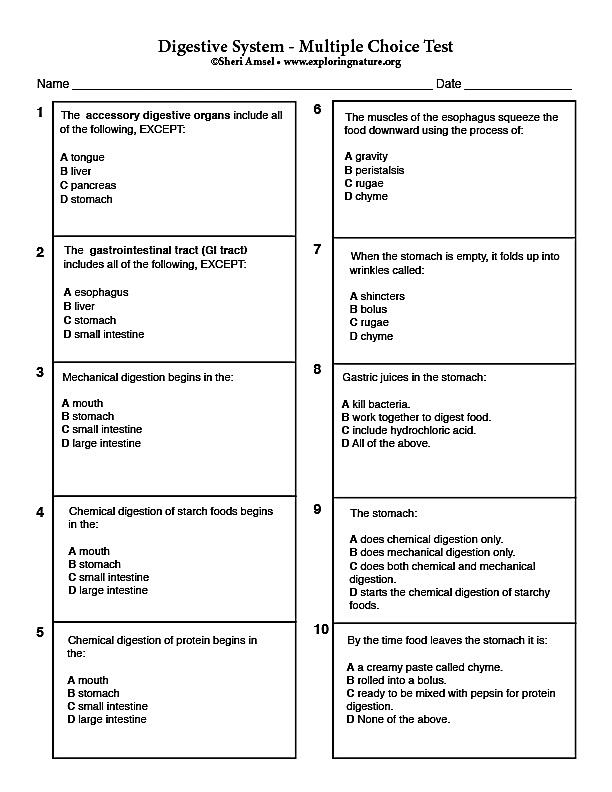
XVIII. Define the digestive organ:
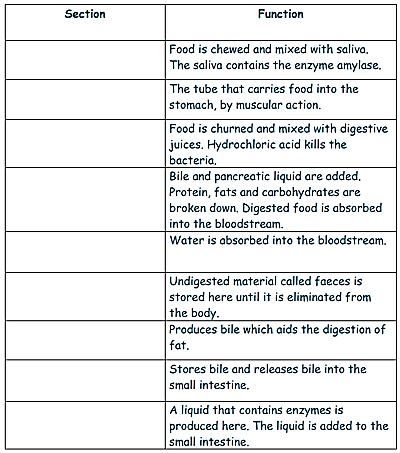
LESSON 17
Grammar: Functions of that (those,) Revision Modal Verbs
Physiology of Nervous System
I. Answer the questions
1. What are the organs of the nervous system?
2. What two parts is the nervous system divided into?
3. What are the functions of the nervous system?
Word building:
Noun suffix: - er (-or)
II. Read and translate the following words:
researcher, user, activator, inhibitor, pace-maker, trigger
III. Read and translate the words of the Latin and Greek origin
sense [sens], perception [pq`sepSn], temperature [`tempqrqCq], somatic [se`mxtIk], autonomic [,Ltq`nPmIk], receptor [rI`septq], data [deItq] (sg. datum [deItqm]), glia [glJq, glAIq], synapse [`saInxps], stimulus [`stImjqlqs] (pl. stimuli [`stImjqlaI]), vision [vIZqn],
Active vocabulary
to sense [sens] – ощущать, воспринимать органами чувств
sense [sens] – чувство, ощущение
touch [tAC] – осязание, прикосновение
smell [smel] – обоняние, запах, аромат
taste [teIst] –вкус, вкусовые ощущения
response [rI`spOns] - ответ, ответная реакция
condition [kqn`dISn] - состояние, условие
surroundings [sq`raundINz] - окружение, окружающая среда
perception [pq`sepSn] - восприятие, ощущение, чувственное восприятие
sight [saIt] (vision [vIZn]) - зрение
hearing [`hIqrIN] - слух
excitation [,eksI`teISn] - возбуждение, раздражение
inhibition [,InhI`bISn] - торможение
integration [,IntI`greISn] - интеграция, объединение, встраивание
to compare [kem`peq] (with) – сравнивать, сопоставлять
impulse [`ImpAls] - импульс, возбуждение
sweat [swet] - пот, испарина
to carry [`kxrI] - нести, переносить
retina [`retInq] - сетчатка, внутренняя оболочка глазного яблока
Usefulvocabulary
motor output [`mqutq ,autput] - двигательная реакция, выход двигательных нервных волокон
sensory input [`sensqrI ,Intput] – сенсорный ввод
vice versa[,vaIsI`vWsq] – наоборот, противоположно
effector [e`fektqr] – нервное окончание, исполнительный орган
sensation[sen`seISn] - чувство, ощущение, восприятие
to gain [geIn] - получать, достигать
higher cognitive function [`haIq ,kOgnqtIv] – высшая когнитивная функция
free nerve ending [ `nWv ,endIN] - свободное нервное окончание
encapsulated nerve ending [In`kxplsjqletqd]– инкапсулированное нервное окончание
rods - палочки (чувствительные элементы глаза)
cones [`kquns] - колбочки (чувствительные элементы глаза)
reflex arch [`rJfleks,RC] – рефлекторная дуга
IV. Read and translate the following word combinations paying attention to the word formation:
nerve – nervous, communicate - communicated - communicating - communication, sense - sensitive - sensory - sensation, to touch – the touch, to surround– surrounded – surroundings, conscious - consciously – subconsciously - unconsciously, to function – the function – functionally, integrate– integrated - integration, to inhibit– inhibited – inhibition, to secret - secreted - secretion
V. Read and translate the following word combinations into Russian:
to communicate with the outside world, to take in the information through our senses, reflexively to pull back the hand, on the basis of anatomy and physiology, a response to a sensory input, sensory areas of the brain, defined by the structures, autonomic control related to gastrointestinal functions, centers communicating with the brain via effectors, to register the presence of a change, a particular event in the environment, to combine sensory perceptions and higher cognitive functions, to receive stimuli from the outside world, a physical stimulus, classified by their structure and by the type of stimulus, to detect stimuli from the 5 special senses
Grammar
VI. Define the function of that (those) and translate the sentences
1. That region can also receive input from other neurons. 2. The nervous system is involved in receiving information about the environment around us and generating responses to that information. 3. The mechanism of breathing at altitude is mainly identical to that of breathing at sea level but with some differences. 4. The contraction of the diaphragm muscle causes a pressure changing which is equal to that caused by elastic components of the respiratory system. 5. It is the number and types of cells in the blood that can indicate disease and infection. 6. Many threads of research suggest that motor activity exists well before the maturation of the sensory systems. 7. Sensory neurons have axons that run from the toes to the dorsal columns. 8. The autonomic system regulates systems that are unconsciously carried out to keep our body alive and well, such as breathing, digestion, and regulation of the heartbeat. 9. That the human brain is the most complicated mechanism in the nature is known for everybody. 10. It is through the nervous system that we communicate with the outside world
VII. Translate the sentences into English:
1. Периферическая нервная система - это обширная сеть черепных и спинномозговых нервов, которые связаны с головным и спинным мозгом. 2. Мозжечок –
отдел головного мозга, который расположен позади моста и продолговатого мозга. 3. Западные учёные обычно рассматривают симпатическую нервную систему как вегетативную систему регуляции, т.е. систему, которая функционирует без участия сознания. 4. Соматическая нервная система отвечает за функции, которые способствуют движению скелетных мышц. 5. Нейроны, которые проводят импульс от чувствительных нервных окончаний к центральной нервной системе называются сенсорными нейронами. 6. Многие исследователи в области когнитивной неврологии и когнитивной физиологии полагают, что эта система обеспечивает физиологический механизм для связи «восприятие\действе».7. Недавние исследования показали, что кроме обладания двигательной функцией мозжечок также играет роль в формировании эмоций.
VIII. Read and translate the sentences
1. There are actually more senses than just those, but that list represents the major senses. 2. Stimuli that are received by sensory structures are communicated to the nervous system where that information is processed. 3. Voluntary motor response means the contraction of skeletal muscle, but those contractions are not always voluntary in the sense that you have to want to perform them. 4. There is enough evidence that some amino acids act as either excitatory or inhibitory transmitters. 5. In recognition the presentation of the information provides the knowledge that the information has been seen before.
Reading
IX. Read and translate the text
Nervous System Physiology. Sense Organs
It is through the nervous system that we communicate with the outside world and, at the same time, many mechanisms inside our body are controlled. The nervous system takes in the information through our senses, processes the information and triggers reactions, such as making your muscles move or causing you to feel pain. For example, if you touch a hot plate, you reflexively pull back your hand and your nerves simultaneously send pain signals to your brain.
The nervous system can be separated into divisions on the basis of anatomy and physiology. The anatomical divisions are the central nervous system (CNS) and peripheral nervous systems (PNS). The CNS is conceived as a system devoted to information processing, where an appropriate motor output is computed as a response to a sensory input. The brain, a part of CNS, receives information about the body’s condition and surroundings from all of the sensory receptors in the body. All of this information is fed into sensory areas of the brain, which put this information together to create a perception of the body’s internal and external conditions. Some of this sensory information is autonomic sensory information that tells the brain subconsciously about the condition of the body, for example body temperature, heart rate, and blood pressure. Other information is somatic sensory information that the brain is consciously aware of, for example touch, sight, sound, and hearing. The PNS includes afferent and efferent branches with further subdivisions for somatic, visceral and autonomic function. The information about changes in the internal and external environment is processed by the sensory receptors and sent to the CNS via afferent sensory nerves. The two systems function together, by way of nerves from the PNS entering and becoming part of the CNS, and vice versa.
There are two ways to consider how the nervous system is divided functionally. First, the basic functions of the nervous system are sensation (sensory input), integration of data, and response (motor output). Secondly, control of the body can be somatic or autonomic, divisions are largely defined by the structures involved in the response. There is also a region of the PNS called the enteric nervous system that is responsible for a specific set of the functions within the realm of autonomic control related to gastrointestinal functions.
The CNS has various centers located within it that carry out the sensory input, motor output and integration of data. The first major function of the nervous system is sensation — receiving information about the environment to gain input about what is happening outside the body (or, sometimes, within the body) by way of neurons, glia and synapses. The neurons operate on excitation or inhibition, and their communication with one another determines their function.
Stimuli that are received by sensory structures are communicated to the nervous system where that information is processed. This is called integration. Stimuli are compared with, or integrated with, other stimuli, memories of previous stimuli, or the state of a person at a particular time. Integration of data occurs only in the brain. The process of integration combines sensory perceptions and higher cognitive functions to produce a response.
After the brain has processed the information, impulses are then conducted from the brain and spinal cord to muscles and glands, it is called motor output. An obvious response would be the movement of muscles, for example withdrawing a hand from a hot stove or, as for glands, the production and secretion of sweat by the sweat glands to lower body temperature..
All of the body’s many sense organs are components of the nervous system. The main are eyes, ears, nose, tongue and skin referring to the special senses—vision, taste, smell, hearing, and touch. Those five are all senses that receive stimuli from the outside world, and of which there is conscious perception. Additional sensory stimuli might be from the internal environment (inside the body), such as the stretch of an organ wall or the concentration of certain ions in the blood.
The information from eyes, ears, nose, tongue and skin to the brain is carried by special nerve cells. Sensory receptors for the general senses like touch, temperature, and pain are found throughout most of the body. All sensory receptors can be classified by their structure and by the type of stimulus that they detect. Structurally, there are 3 classes of sensory receptors: free nerve endings, encapsulated nerve endings, and specialized cells. It is specialized cells that detect stimuli from the 5 special senses: vision, hearing, touch, smell, and taste.
X. Decide if the statement is True or False:
a. The nervous system takes in the information through our senses, processes the information and triggers reactions.
b. The physiological divisions are the central nervous system and peripheral nervous systems.
c. The brain, a part of PNS, receives information about the body’s condition and surroundings from all of the sensory receptors in the body.
d. The information about changes in the internal and external environment is processed by the sensory receptors and sent to the CNS via afferent sensory nerves.
e. The basic functions of the nervous system are sensation, perception, and response.
f. Responses can be divided into those that are voluntary and involuntary.
g. The main are eyes, ears, nose, tongue and skin referring to the special senses—vision, taste, smell, hearing, and touch.
h. Each of the special senses has its own unique sensory cells.
XI. Make word combinations:
motor neuron
sensory function
sense ending
efferent organ
external stimulus
cognitive input
physical output
nerve environment
XII. Match the word (1-7) with its definition (a-g):
-
stimulus -
receptor -
motor output -
sensory input -
integration of data -
response -
sense organ
-
an organ of the body which responds to externa stimuli by conveying impulses to the sensory nervous system -
a thing or event that evokes a specific functional reaction in an organ or tissue -
impulses conducted from the brain and spinal cord to muscles and glands -
a physical reaction to a specific stimulus or situation -
anything that you perceive using your senses -
combining data residing in different sources and providing users with a unified view of them -
an organ or a cell able to respond to light, heat, or other external stimulus and transmit a signal to a sensory nerve
XIII. Choose the right variant:
Multiple Choice Test

-
How does the nervous system take the information?
-
through the feelings -
through the senses -
through the response -
through the reflex
-
How can one separate the nervous system into divisions?
-
on the basis of anatomy and gross anatomy -
on the basis of microbiology and physiology -
on the basis of anatomy and physiology -
on the basis of physiology and biology
-
Sensory information can be….
-
autonomic sensory information and sympathetic sensory information -
autonomic sensory information and parasympathetic sensory information -
voluntary sensory information and involantary sensory information -
autonomic sensory information and somatic sensory information
-
What are three main functions of the nervous system?
-
sensation, data integration, response -
sensory input, perception, motor output -
sensation, motor output, response -
sensory input, integration of data, reflex
-
Sensation is……..
- receiving information about the internal and external condition of the body
-
receiving information about the environment to gain input about what is happening outside and within the body -
receiving information about the surroundings to gain output what is happening outside and within the body -
receiving information about the senses to gain input about what is happening outside and within the body
-
Integration is…….
- data received by sensory structures and processed by the nervous system
- sensory input received by sensory structures and processed by the nervous system
- motor output received by sensory structures and processed by the nervous system
- stimuli received by sensory structures and processed by the nervous system
-
Motor output is……
- impulses conducted from the brain to muscles and glands
- impulses conducted from the brain and spinal cord to muscles and glands
- impulses conducted from the brain and spinal cord to glands
- impulses conducted from the spinal cord to muscles and glands
-
The nose refers to a special sense called
vision taste smell touch
-
All sensory receptors can be classified by
- their structure and the type of response they detect
- their form and by type of stimulus they detect
- their structure and the type of stimulus they detect
- their structure and the type of stimulus they carry
XIV. Read the text and give the title to each paragraph.
Reflexes and stimulus-response circuit
A reflex is a fast, involuntary reaction to a form of internal or external stimulus.
Many reflexes in the body are integrated in the brain, including the pupillary light reflex, coughing, and sneezing. Many reflexes protect the body from harm. For instance, coughing and sneezing clear the airways of the lungs. Other reflexes help the body respond to stimuli, such as adjusting the pupils to bright or dim light. All reflexes happen quickly by bypassing the control centers of the cerebral cortex and integrating in the lower regions of the brain such as the midbrain or limbic system. The most well-known reflex is the patellar reflex, which is checked when a physician taps on a patient’s knee during a physical examination. Reflexes are integrated in the gray matter of the spinal cord or in the brain stem.
